The European quality labels in chemical sciences: applying the Tuning Methodology in quality assurance
Abstract
The European Chemistry Thematic Network is a non-profit making association focused on enhancing the quality and harmonising the features of chemical education and training all over the European Higher Education Area. In the context of quality assurance, it developed European Quality Labels in Chemical Sciences, which were initiated in the frame of the Tuning project, and are following the Tuning methodology. The Labels are awarded to programmes on chemistry or related disciplines, as well as to studies at the interface of chemistry and other subjects. They are based on the Budapest Cycle Level Descriptors, a detailed adaptation of the Dublin Descriptors for the field of chemical sciences. The following aspects are considered in awarding Eurobachelor® and Euromaster® Labels: learning outcomes, including subject knowledge, abilities and skills; modularisation of courses and contents; ECTS credit distribution and student workload; mobility; methods of teaching and learning; assessment; quality assurance. For the Chemistry Doctorate Eurolabel® the considerations are somehow different and include: fitness for purpose; entry to the programme; length of studies; study programme structure; teaching and training in generic competences; transcripts; graduate schools; supervision; examinations; assessment; and quality assurance. The Chemistry Short Cycle Eurolabel® refers to study programmes, which are placed at Level 5 in the in the European Qualifications Framework for Lifelong Learning, and are also seen as an intermediate level within or linked to the first cycle of the Qualifications Framework for the European Higher Education Area. Aspects considered are analogous to those mentioned for the Eurobachelor® Label.
Published online: 4 July 2014
Downloads
References
Chemistry Doctorate Eurolabel® Project. “A Framework for a Third Cycle Qualification in Chemistry.” Last modified April 8, 2014. http://www.phdchem.eu.
“European Alliance for Subject-Specific and Professional Accreditation and Quality Assurance.” Last modified March 30, 2014. http://www.easpa.eu.
“European Association for Chemical and Molecular Sciences – European Chemist Designation.” Last modified April 15, 2014. http://www.euchems.eu/nc/members/european-chemist.html?sword_list%5B%5D=chemist.
_____. Last modified April 15, 2014. http://www.euchems.eu/about.html.
“European Chemistry Thematic Network.” Last modified March 21, 2014. http://ectn-assoc.cpe.fr/.
_____. “Recommendations for the Third Cycle.” Last modified March 21, 2014. http://ectn-assoc.cpe.fr/chemistry-eurolabels/doc/officials/Off_EDL061017_Eurodoctorate200611V1.pdf.
_____. “The Chemistry “Eurobachelor®.” Last modified March 21. http://ectn-assoc.cpe.fr/chemistry-eurolabels/doc/officials/Off_EBL070131_Eurobachelor_Framework_2007V1.pdf.
_____. “The Chemistry «Euromaster®.” Last modified March 21. http://ectn-assoc.cpe.fr/chemistry-eurolabels/doc/officials/Off_EML060930_Euromaster_Framework_200609V1a.pdf.
European Commission. “A Framework for Qualifications of the European Higher Education Area.” Last modified April 15, 2014. http://www.ehea.info/Uploads/qualification/050218_QF_EHEA.pdf.
_____. “Bologna Process – European Higher Education Area. How does the Bologna Process work.” Last modified April 15, 2014. http://www.ehea.info/article-details.aspx?ArticleId=5.
_____. “Bologna Process – European Higher Education Area.” Last modified April 15, 2014. http://www.ehea.info/.
_____. “European Credit and Accumulation System.” Last modified April 16, 2014. http://ec.europa.eu/education/tools/ects_en.htm.
_____. “European Qualifications Framework for Lifelong Learning.” Last modified October 21, 2013. http://ec.europa.eu/eqf/home_en.htm.
_____. “Making the Most of Our Potential: Consolidating the European Higher Education Area (Bucharest 2012).” Last modified April 15, 2014. http://www.ehea.info/Uploads/%281%29/Bucharest%20Communique%202012%281%29. pdf.
_____. “The Bologna Process 2020 – The European Higher Education Area in the New Decade (Leuven/Louvain-la-Neuve 2009).” Last modified April 15, 2014. http://www.ehea.info/Uploads/Declarations/Leuven_Louvain-la-Neuve_Communiqu%C3%A9_April_2009.pdf.
_____. “The European Higher Education Area – Achieving the Goals (Bergen 2005).” Last modified April 15, 2014. http://www.ehea.info/Uploads/Declarations/Bergen_Communique1.pdf.
_____. “The Framework of Qualifications for the European Higher Education Area – Dublin Descriptors.” Last modified April 15, 2014. http://www.ehea.info/Uploads/Documents/QF-EHEA-May2005.pdf.
Tuning Project. “Reference Points for the Design and Delivery of Degree Programmes in Chemistry.” Accessed May 2, 2014. http://www.unideusto.org/tuningeu/images/stories/Publications/CHEMISTRY_FOR_WEBSITE.pdf.
Authors are required to sign and submit a copyright transfer agreement after acceptance but before publication of their manuscript. To that effect, they receive, from the Managing Editor of Tuning Journal for Higher Education, a standard copyright assignment form designed along the following lines:
1. Authorship:
The author who signs the copyright transfer agreement must be the sole creator of the work or legally acting on behalf of and with the full agreement of all the contributing authors.
2. Copyright and Code of conduct:
a) Authors warrant that their work is original; has not been previously copyrighted or published in any form; is not under consideration for publication elsewhere; its submission and publication do not violate TJHE Ethical Guidelines for Publication and any codes (of conduct), privacy and confidentiality agreements, laws or any rights of any third party; and no publication payment by the Publisher (University of Deusto) is required.
b) Authors are solely liable for the consequences that may arise from third parties’ complaints about the submitted manuscript and its publication in Tuning Journal for Higher Education (TJHE).
c) Authors grant to the Publisher the worldwide, sub-licensable, and royalty-free right to exploit the work in all forms and media of expression, now known or developed in the future, for educational and scholarly purposes.
d) Authors retain the right to archive, present, display, distribute, develop, and republish their work (publisher's version) to progress their scientific career provided the original publication source (Tuning Journal) is acknowledged properly and in a way that does not suggest the Publisher endorses them or their use of the wortk.
e) Authors warrant that no permissions or licences of any kind will be granted that might infringe the rights granted to the Publisher.
3. Users:
Tuning Journal for Higher Education is an Open Access publication. Its content is free for full and immediate access, reading, search, download, distribution and reuse in any medium or format only for non-commercial purposes and in compliance with any applicable copyright legislation, without prior permission from the Publisher or the author(s). In any case, proper acknowledgement of the original publication source must be made and any changes to the original work must be indicated clearly and in a manner that does not suggest the author’s and or Publisher’s endorsement whatsoever. Any other use of its content in any medium or format, now known or developed in the future, requires prior written permission of the copyright holder.


1.jpg)
1.jpg)
.jpg)
1.jpg)
.jpg)
.jpg)









